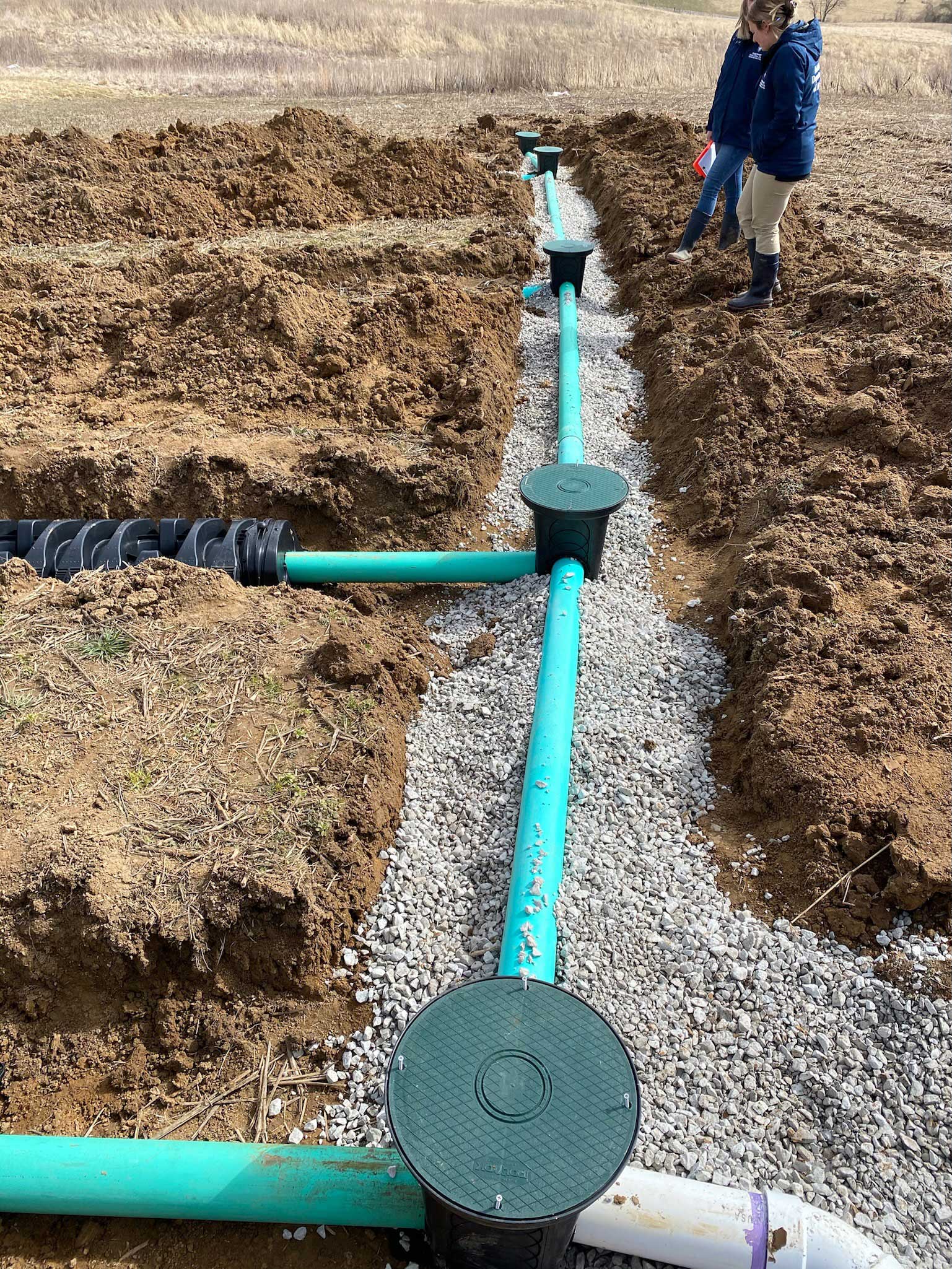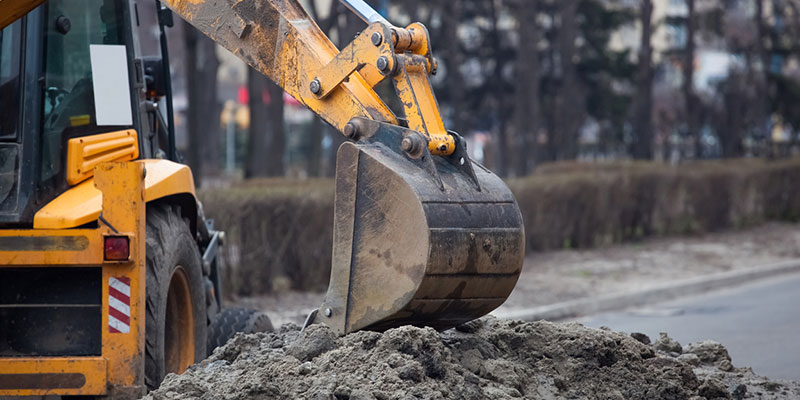Expert Septic Ohio - Trusted Septic System Specialists in Ohio
Expert Septic Ohio - Trusted Septic System Specialists in Ohio
Blog Article
Unveiling the Art of Excavation: Pro Tips for Safe and Efficient Digging
As dirt is turned and earth is moved, the complexities of excavation reveal themselves, demanding a keen understanding of tools, soil structure, safety and security methods, and environmental considerations. The knowledge required to browse these elements effectively can imply the difference between an effective excavation project and a prospective disaster.
Importance of Proper Equipment
To guarantee the safety and security and effectiveness of any type of excavation job, making use of the appropriate devices is vital. Excavation jobs vary in extent and complexity, ranging from small domestic landscape design work to large-scale construction undertakings.
These functional makers come in numerous dimensions to match different job needs. Small excavators are perfect for smaller tasks, while larger excavators tackle more substantial jobs efficiently.
Apart from excavators, other vital devices includes dump bulldozers, trucks, and trenchers. Dispose trucks are vital for getting rid of and transporting excavated materials, while trenchers are utilized for digging deep and narrow trenches. Bulldozers master tasks that need pressing large quantities of soil or particles. By spending in the ideal devices, excavation projects can be completed securely, on time, and with accuracy.
Comprehending Soil Make-up
A comprehensive grasp of dirt composition is basic for performing excavation projects with accuracy and safety and security. Comprehending the different types of soil is essential as it straight influences excavation methods, devices choice, and overall task effectiveness. Soil structure usually includes 4 primary parts: sand, silt, clay, and organic matter. Each part has special buildings that influence how soil reacts to excavation processes.
Sand fragments are the largest and give great water drainage yet supply little cohesion. Silt bits are smaller than sand yet larger than clay, providing modest drain and cohesion. Clay fragments are the smallest and offer high cohesion however inadequate water drainage. Raw material, such as decomposing plant material, influences soil fertility and security.
Prior to starting excavation, conducting dirt tests to determine its composition and characteristics is essential. This info assists in choosing the ideal tools, implementing precaution, and developing excavation strategies tailored to the details dirt problems - septic ohio. By comprehending soil make-up, excavation specialists can improve project results while guaranteeing safety and security and adherence to ideal techniques
Safety And Security Procedures and Procedures
Comprehending dirt composition is the keystone whereupon precaution and methods for excavation jobs are constructed, making certain the wellness of employees and the success of the venture. When it concerns safety and security during excavation, there are several vital steps that should be implemented to reduce dangers and stop mishaps.
Firstly, before any kind of digging starts, a thorough inspection of the site ought to be performed to determine any type of possible risks such as underground energies, unstable soil conditions, or nearby frameworks that can posture a danger. It is essential to have an experienced person manage the excavation procedure to make sure that all security procedures are complied with strictly.
Additionally, all employees entailed in the excavation has to be appropriately educated in risk-free excavating methods and the proper operation of equipment. By adhering to these security procedures and methods, excavation tasks can visit this site be finished efficiently and without event.
Reliable Excavation Planning
When beginning on an excavation job, thorough planning is essential to guarantee performance, safety and security, and effective end results. Effective excavation planning entails a number of vital steps that are crucial for the smooth execution of the project. The first step is to conduct a thorough site evaluation to determine any type of potential threats, such as underground utilities or unsteady soil problems. This information is crucial for creating an in-depth excavation plan that consists of precaution and risk reduction techniques.
Once the site evaluation is total, the following action is to develop a clear timeline and routine for the excavation tasks. This consists of determining the sequence of tasks, devices demands, and workforce allotment. Correct scheduling helps stay clear of hold-ups and makes certain that the job remains on track.

Additionally, communication amongst all group participants is vital during the planning phase. Clear regulations, routine updates, and efficient coordination are necessary for an effective excavation project. By spending time and effort in meticulous preparation, excavation teams can considerably improve productivity, decrease dangers, Read Full Report and achieve effective outcomes.

Taking Care Of Environmental Considerations
With increasing focus on environmental sustainability in construction practices, handling environmental factors to consider has actually become an essential facet of excavation jobs. Excavation tasks have the potential to impact the surrounding environment through soil erosion, debris drainage, habitat disruption, and contamination of water sources. To mitigate these dangers, it is vital to execute finest practices that focus on ecological defense.

Moreover, appropriate waste monitoring is essential to stop soil and water contamination. Carrying out treatments for the disposal of hazardous materials, recycling of waste materials, and minimizing using here dangerous chemicals can significantly reduce the ecological influence of excavation jobs. By incorporating these practices right into excavation planning and implementation, building and construction companies can guarantee that their tasks are not just secure and productive but likewise ecologically responsible.
Final Thought
In final thought, mastering the art of excavation needs a comprehensive understanding of appropriate devices, soil make-up, safety and security measures, and efficient preparation. By adhering to these standards and thinking about environmental factors, excavations can be conducted safely and efficiently. It is essential to prioritize security and performance in every digging job to guarantee successful outcomes.
As dirt is transformed and planet is relocated, the complexities of excavation disclose themselves, requiring a keen understanding of equipment, dirt composition, safety and security methods, and ecological factors to consider.To guarantee the safety and security and performance of any excavation job, making use of the ideal tools is critical.A comprehensive understanding of dirt make-up is essential for performing excavation jobs with precision and safety and security. Recognizing the various types of dirt is vital as it straight affects excavation techniques, equipment selection, and general job performance. By comprehending soil composition, excavation professionals can improve task end results while making sure security and adherence to finest practices.
Report this page